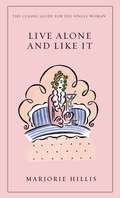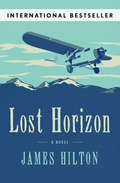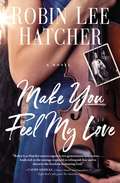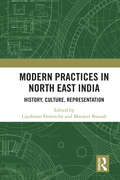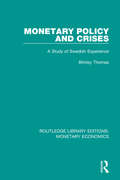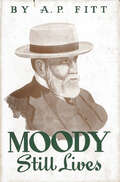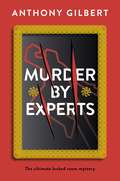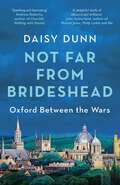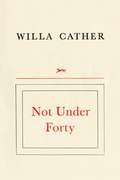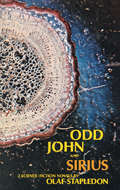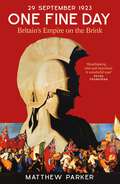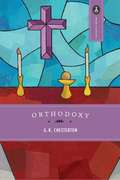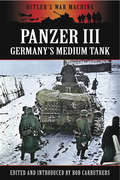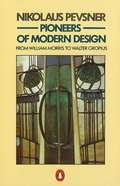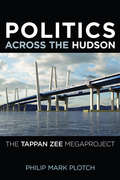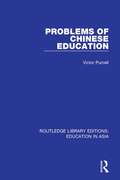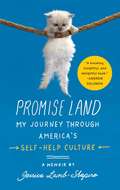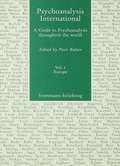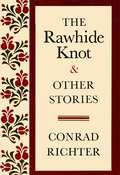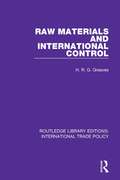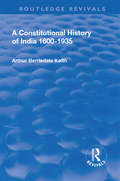- Table View
- List View
Live Alone and Like It: The Classic Guide For the Single Woman
by Marjorie Hillis"Whether you view your one-woman ménage as Doom or Adventure, you need a plan, if you are going to make the best of it." Thus begins Marjorie Hillis' archly funny, gently prescriptive manifesto for single women. Though it was 1936 when the Vogue editor first shared her wisdom with her fellow singletons, the tome has been passed lovingly through the generations, and is even more apt today than when it was first published. Hillis, a true bon vivant, was sick and tired of hearing single women carping about their living arrangements and lonely lives; this book is her invaluable wake-up call for single women to take control and enjoy their circumstances. Hillis takes readers through the fundamentals of living alone, including the importance of creating a hospitable environment at home, cultivating hobbies that keep her there ("for no woman can accept an invitation every night without coming to grief"), the question of whether single ladies may entertain men at home (the answer may surprise you!), and many more. With engaging chapter titles like "A Lady and Her Liquor" and "The Pleasures of a Single Bed," along with a new preface by author Laurie Graff (You Have to Kiss A Lot of Frogs), LIVE ALONE AND LIKE IT is sure to appeal to live-aloners and many other readers alike.
Lost Horizon: A Novel
by James HiltonIn this &“engagingly written&” international bestseller, survivors of a plane crash discover a peaceful paradise hidden in the Himalayas called Shangri-La (The New York Times). Hugh Conway saw humanity at its worst while fighting in the trenches of the First World War. Now, more than a decade later, Conway is a British diplomat serving in Afghanistan and facing war yet again—this time, a civil conflict forces him to flee the country by plane. When his plane crashes high in the Himalayas, Conway and the other survivors are found by a mysterious guide and led to a breathtaking discovery: the hidden valley of Shangri-La. Kept secret from the world for more than two hundred years, Shangri-La is like paradise—a place whose inhabitants live for centuries amid the peace and harmony of the fertile valley. But when the leader of the Shangri-La monastery falls ill, Conway and the others must face the daunting prospect of returning home to a world about to be torn open by war. Thrilling and timeless, Lost Horizon is a masterpiece of modern fiction, and one of the most enduring classics of the twentieth century.
Make You Feel My Love
by Robin Lee HatcherOne broken woman. One lost man. And the long-buried secrets tying them together.After escaping an abusive relationship, Chelsea Spencer flees to Chickadee Creek—the town where her great aunt Rosemary owns a quaint little antique shop. There, Chelsea plans to help with the shop as her aunt heals from an accident—and perhaps find some healing of her own.Liam Chandler was one film away from a leading role when his brother Jacob was stricken with cancer. After spending the last months of Jacob&’s life with him in Boise, Liam heads to the vacation home he built outside of Chickadee Creek to get his life and his faith back on track.While working to clean out a storage room in the antique shop, Chelsea finds an old violin. Aunt Rosemary says she may have the instrument, but they soon learn it is very valuable and once belonged to Cora Chandler, Liam&’s great-great-grandmother.Drawn together by the old violin and stories from the past, Chelsea and Liam begin to find answers for their present and the future God has in store for them.
Mary Lavelle
by Kate O'BrienMary Lavelle, a beautiful young Irish woman, travels to Spain to see some of the world before marrying her steadfast fiance John. But despite the enchanting surroundings and her three charming charges, life as governess to the wealthy Areavaga family is lonely and she is homesick. Then comes the arrival of the family's handsome, passionate - and married - son Juanito and Mary's loyalties and beliefs are challenged. Falling in love with Juanito and with Spain, Mary finds herself at the heart of a family and a nation divided.
Mary Lavelle (Virago Modern Classics #293)
by Kate O'BrienMary Lavelle, a beautiful young Irish woman, travels to Spain to see some of the world before marrying her steadfast fiance John. But despite the enchanting surroundings and her three charming charges, life as governess to the wealthy Areavaga family is lonely and she is homesick. Then comes the arrival of the family's handsome, passionate - and married - son Juanito and Mary's loyalties and beliefs are challenged. Falling in love with Juanito and with Spain, Mary finds herself at the heart of a family and a nation divided.
Modern Practices in North East India: History, Culture, Representation
by Lipokmar Dzüvichü Manjeet BaruahThis book brings together essays on North East India from across disciplines to explore new understandings of the colonial and contemporary realities of the region. Departing from the usual focus on identity and politics, it offers fresh representations from history, social anthropology, culture, literature, politics, performance and gender. Through the lens of modern practices, the essays in this volume engage with diverse issues, including state-making practices, knowledge production and its politics, history writing, colonialism, role of capital, institutions, changing locations of orality and modernity, production and reception of texts, performances and literatures, social change and memory, violence and gender relations, along with their wider historical, geographical and ideational mappings. In the process, they illustrate how the specificities of the region can become useful sites to interrogate global phenomena and processes — for instance, in what ways ideas and practices of modernity played an important role in framing the region and its people. Further, the volume underlines the complex ways in which the past came to be imagined, produced and contested in the region. With its blend of inter-disciplinary approach, analytical models and perspectives, this book will be useful to scholars, researchers and general readers interested in North East India and those working on history, frontiers and borderlands, gender, cultural studies and literature.
Monetary Policy and Crises: A Study of Swedish Experience (Routledge Library Editions: Monetary Economics Ser.)
by Brinley ThomasThis book, first published in 1936, is both an instructive chapter in economic history and a stimulating period in the history of economic thought. The author examines the years of economic recovery in Sweden and the measures that the country adopted to cope with the crisis due to the War. This title will be of interest to students of monetary e
Moody Still Lives: Word Pictures of D.L. Moody
by Arthur Percy FittThis book by Moody&’s son-in-law and former secretary is not, strictly speaking, a life story of the great evangelist. It is rather a loving estimate of his work and Spirit-filled life by one who was closely associated with him during his most fruitful years. The author endeavors to explain how &“starting from nothing, Mr. Moody became the most influential spiritual figure America has yet produced.&” He portrays Moody the man . . . in his daily contact with family and friends, as well as in his public appearances. Says Mr. Fitt, in commenting on the failure of Mr. Moody&’s popularity to exalt the man, &“He so magnified the grace and power of God that he attracted no attention to himself.&”You will get an unforgettable picture of Moody in action. The book reveals something of the secret of Moody&’s power, in order that, as the author expresses it, &“a multitude of other lives may be quickened.&”
Moody Still Lives: Word Pictures of D.L. Moody
by Arthur Percy FittThis book by Moody&’s son-in-law and former secretary is not, strictly speaking, a life story of the great evangelist. It is rather a loving estimate of his work and Spirit-filled life by one who was closely associated with him during his most fruitful years. The author endeavors to explain how &“starting from nothing, Mr. Moody became the most influential spiritual figure America has yet produced.&” He portrays Moody the man . . . in his daily contact with family and friends, as well as in his public appearances. Says Mr. Fitt, in commenting on the failure of Mr. Moody&’s popularity to exalt the man, &“He so magnified the grace and power of God that he attracted no attention to himself.&”You will get an unforgettable picture of Moody in action. The book reveals something of the secret of Moody&’s power, in order that, as the author expresses it, &“a multitude of other lives may be quickened.&”
Murder by Experts (Mr Crook Murder Mystery)
by Anthony GilbertLawyer-detective Arthur Crook always believes his clients are innocent... despite the evidence to the contrary.Classic crime from one of the greats of the Detection ClubA famous art collector's car discovered at the bottom of a cliff after he was supposed to have taken a young woman to the railway station, so naturally the police expect to find his body there, too. But it turns up weeks later, in a locked room in his country house, and he's been stabbed to death...
Not Far From Brideshead
by Daisy DunnOxford thought it was at war. And then it was. After the horrors of the First World War, Oxford looked like an Arcadia - a dreamworld - from which pain could be shut out. Soldiers arrived with pictures of the university fully formed in their heads, and women finally won the right to earn degrees. Freedom meant reading beneath the spires and punting down the river with champagne picnics. But all was not quite as it seemed. Boys fresh from school settled into lecture rooms alongside men who had returned from the trenches with the beginnings of shellshock. It was displacing to be surrounded by aristocrats who liked nothing better than to burn furniture from each other's rooms on the college quads for kicks. The women of Oxford still faced a battle to emerge from their shadows. And among the dons a major conflict was beginning to brew. Set in the world that Evelyn Waugh immortalised in Brideshead Revisited, this is a true and often funny story of the thriving of knowledge and spirit of fun and foreboding that characterised Oxford between the two world wars. One of the protagonists, in fact, was a friend of Waugh and inspired a character in his novel. Another married into the family who inhabited Castle Howard and befriended everyone from George Bernard Shaw to Virginia Woolf. The third was an Irish occultist and correspondent with the poets W. H. Auden, Louis MacNeice and W. B. Yeats. This singular tale of Oxford colleagues and rivals encapsulates the false sense of security that developed across the country in the interwar years. With the rise of Hitler and the Third Reich came the subversion of history for propaganda. In academic Oxford, the fight was on not only to preserve the past from the hands of the Nazis, but also to triumph, one don over another, as they became embroiled in a war of their own.
Not Under Forty: Large Print
by Willa CatherFor Willa Cather, "the world broke in two in 1922 or thereabouts. " The whole legacy of Western civilization stood on the far side of World War I, and in the spiritually impoverished present she looked back to that. To that she directed readers of these essays, declaring that anyone under forty years old would not be interested in them. But she was wrong: since its first publication in 1936, "Not Under Forty" has appealed to readers of all ages who share Cather's concern for excellence, for what endures, in literature and in life.
Odd John and Sirius
by Olaf StapledonIn the list of modern science fiction personalities, the late British philosopher and novelist W. Olaf Stapledon is prominent. Last and First Men and Starmaker are generally considered to be the finest future histories ever written, the gage by which all earlier and later works are measured. Odd John and Sirius are no less accurate in dealing with the problem in another guise. The central question is: if and when a superior being is introduced into a culture, how will either survive? Stapledon’s answers are by no means romantic fantasies; they are the pathetic, realistic conclusions which we, one day, may be forced to accept.Odd John is the definitive fictionalization of the mutated superman. After a strange birth and childhood, John is suddenly compelled to accept the fact that he is different. What is more, he has to decide what to do with his gifts. Sirius, although the logical successor to Odd John, deals with quite another being — an alien intelligence, artificially produced, a dog with superhuman mentality, who is not only superior to his own kind, but rejected by those with whom he has most in common. Stapledon uses his powers — intellectual, imaginative, and observant — to detail the conflict in its very "human" form.Odd John and Sirius are something else besides explorations of superbeings. Stapledon is capable of a great deal of humor and tongue-in-cheek description. If his writing, as he says in the subtitle to Odd John, is between jest and earnest, his sympathies are divided between the conflicting forces of man and superman. For those in literature, in psychology, in philosophy, or even in the world as it now exists, the detailed histories of these two strange beings will be ones to ponder. If anything, we have moved closer to the stage when conflict between superior and sapient man is imminent.
One Fine Day: Britain's Empire on the Brink
by Matthew Parker'Breathtaking... vital and important. A wonderful read' PETER FRANKOPAN'Marvellous... escapes the inane, balance-sheet view of Empire and sees its full complexity' SATHNAM SANGHERA'Excellent... his mastery of detail is impeccable' DOMINIC SANDBROOK, Sunday Times'Extraordinary... [brings] the world of a century ago to fresh, vivid life' ALEX VON TUNZELMANNTHE STORY OF THE BRITISH EMPIRE AT ITS MAXIMUM TERRITORIAL EXTENTOn Saturday 29 September 1923, the Palestine Mandate became law and the British Empire now covered a scarcely credible quarter of the world's land mass, containing 460 million people. It was the largest empire the world had ever seen. But it was beset by debt and doubts. This book is a new way of looking at the British Empire. It immerses the reader in the contemporary moment, focusing on particular people and stories from that day, gleaned from newspapers, letters, diaries, official documents, magazines, films and novels: from a remote Pacific island facing the removal of its entire soil, across Australia, Burma, India and Kenya to London and the West Indies.In some ways, the issues of a hundred years ago are with us still: debates around cultural and ethnic identity in a globalised world; how to manage multi-ethnic political entities; racism; the divisive co-opting of religion for political purposes; the dangers of ignorance. In others, it is totally alien. What remains extraordinary is the Empire's ability to reveal the most compelling human stories. Never before has there been a book which contains such a wide spread of vivid experiences from both colonised and coloniser: from the grandest governors to the humblest migrants, policemen and nurses.
Orthodoxy: Large Print (Image Classics #12)
by G. K. ChestertonA Timeless Argument for Traditional ChristianityIf you think orthodoxy is boring and predictable, think again. In this timeless classic, G. K. Chesterton, one of the literary giants of the twentieth century, presents a logical and personal reasoning for Christianity in model apologetic form. Gilbert Keith Chesterton was a self-described pagan at age 12 and totally agnostic by age 16. Yet, his spiritual journey ultimately led to a personal philosophy of orthodox, biblical Christianity. The account of his experiences, Orthodoxy bridges the centuries and appeals to today's readers who face the same challenges of materialism, self-centeredness, and progress. "Hope means hoping when things are hopeless, or it is no virtue at all. And faith mean believing the incredible, or it is no virtue at all." --G.K. ChestertonA unique book, Orthodoxy addresses our faith struggles and how we communicate our faith to others. Through philosophy, poetry, reason and humor Chesterton leads us on a literary journey toward truth. This edition includes a foreword by Philip Yancey who, like C. S. Lewis and other leading Christian writers, found this book to be pivotal his Christian experience. Yancey credits Chesterton with helping to revive and define his faith.
Panzer III: Germany's Medium Tank (Hitler's War Machine)
by Bob CarruthersThe Panzer III was designed to be the backbone of the Panzer force and was deployed on every front. However, due to its deficient armament and poor armour, and despite its outstanding reliability, it was obsolete by 1942.This comprehensive overview of the Panzer III in action was compiled by Emmy Award winning historian Bob Carruthers. It draws heavily on war-time intelligence reports to produce a fascinating insight into the development and combat history of the Panzer III at the tactical and operational level.Also featured are rare developments such as the flame thrower variant alongside unpublished photographs and illustrations which provide an absorbing study, from an array of primary sources, of the world of the Panzer III and its crews, which conveys to the modern reader a vivid sense of how they were viewed at the time.
Pioneers of Modern Design: From William Morris to Walter Gropius
by Nikolaus PevsnerOne of the most widely read books on modern design, Nikolaus Pevsner's landmark work today remains as stimulating as it was when first published in 1936. This expanded edition of Pioneers of Modern Design provides Pevsner's original text along with significant new and updated information, enhancing Pevsner's illuminating account of the roots of Modernism. The book now offers many beautiful colour illustrations; updated biographies and bibliographies of all major figures; illustrated short essays on key themes, movements, and individuals; a critique of Pevsner's analysis from today's perspective; examples of works after 1914 (where the original study ended); a biography detailing Pevsner's life and achievements; and much more. Pevsner saw Modernism as a synthesis of three main sources: William Morris and his followers, the work of nineteenth-century engineers, and Art Nouveau. The author considers the role of these sources in the work of early Modernists and looks at such masters of the movement as C.F.A. Voysey and Charles Rennie Mackintosh in Britain, Sullivan and Frank Lloyd Wright in America, and Adolf Loos and Otto Wagner in Vienna. The account concludes with a discussion of the radical break with the past represented by the design work of Walter Gropius and his future Bauhaus colleagues. Nikolaus Pevsner (1902-1983), a distinguished scholar of art and architecture, was best known as editor of the 46-volume series The Buildings of England and as founding editor of The Pelican History of Art.
Politics Across the Hudson
by Philip Mark PlotchThe State of New York is now building one of the world's longest, widest, and most expensive bridges--the new Tappan Zee Bridge--stretching more than three miles across the Hudson River, approximately thirteen miles north of New York City. In Politics Across the Hudson, urban planner Philip Plotch offers a behind-the-scenes look at three decades of contentious planning and politics centered around this bridge. He reveals valuable lessons for those trying to tackle complex public policies while also confirming our worst fears about government dysfunction. Drawing on his extensive experience planning megaprojects, interviews with more than a hundred key figures--including governors, agency heads, engineers, civic advocates, and business leaders--and extraordinary access to internal government records, Plotch tells a compelling story of high-stakes battles between powerful players in the public, private, and civic sectors. He reveals how state officials abandoned viable options, squandered hundreds of millions of dollars, forfeited more than three billion dollars in federal funds, and missed out on important opportunities. Faced with the public's unrealistic expectations, no one could identify a practical solution to a vexing problem, a dilemma that led three governors to study various alternatives rather than disappoint key constituencies. Politics Across the Hudson continues where Robert Caro's The Power Broker left off and illuminates the power struggles involved in building New York's first major new bridge since the Robert Moses era. Plotch describes how one governor, Andrew Cuomo, shrewdly overcame the seemingly insurmountable obstacles of onerous environmental regulations, vehement community opposition, insufficient funding, interagency battles, and overly optimistic expectations.
Post After Post-Mortem: An Oxfordshire Mystery (British Library Crime Classics)
by E.C.R. Lorac[A] twisty "snake in the garden" country-house mystery [where] Lorac constructs a challenging puzzle and provides a marvelous glimpse into pre-WWII Oxford life." — Booklist, Starred Review"Lorac keeps everything professional and smartly paced"— Kirkus Reviews"Now tell us about your crime novel. Take my advice and don't try to be intellectual over it. What the public likes is blood."The Surrays and their five children form a prolific writing machine, with scores of treatises, reviews, and crime thrillers published under their family name. Following a rare convergence of the whole household at their Oxfordshire home, Ruth—middle sister who writes "books which are just books"— decides to spend some weeks there recovering from the pressures of the writing life, while the rest of the brood scatter to the winds again. Their next return is heralded by the tragic news that Ruth has taken her life after an evening at the Surrays's hosting a set of publishers and writers, one of whom is named as Ruth's literary executor in the will she left behind.Despite some suspicions from the family, the verdict at the inquest is suicide—but when Ruth's brother Richard receives a letter from the deceased which was delayed in the post, he enlists the help of CID Robert Macdonald to investigate what could only be an ingeniously planned murder.
Problems of Chinese Education (Routledge Library Editions: Education in Asia #11)
by Victor PurcellThe aim of this book, first published in 1936, was to give a complete conspectus of Chinese education at the time. It succeeds in this, describing entirely a period when China had abandoned an age-old system of literary education in favour of one derived from the West. However, the sponsors of the change, while admitting that the immediate new models were Western in origin, were able to point out that their prototypes were, in fact, in ancient China.
Promise Land
by Jessica Lamb-Shapiro"In writing this book I walked on hot coals, met a man making a weight-loss robot, joined a Healing Circle, and faced my debilitating fear of flying. Of all of these things, talking to my father about my mother's death was by far the hardest." The daughter of a widowed child psychologist and parenting author, Jessica Lamb-Shapiro grew up immersed in the culture of self-help, of books and pamphlets and board games and gadgets and endless jargon-filled conversations about feelings. It wasn't until she hit her thirties that Jessica began to wonder: if all this self-improvement arcana was as helpful as it promised to be, why wasn't she better adjusted? She had a flying phobia, hadn't settled down, and didn't like to talk about her feelings. Thus began Jessica's fascination with the eccentric and labyrinthine world of self-help. She read hundreds of books and articles, attended dating seminars, walked on hot coals, and attempted to conquer her fear of flying. But even as she made light of the sometimes dubious effectiveness of these as-seen-on-TV treatments, she slowly began to realize she was circling a much larger problem: her mother's death when she was a toddler, and the almost complete silence that she and her father had always observed on the subject. In the tradition of Augusten Burroughs, Jessica Lamb-Shapiro illuminates the peculiar neuroses and inalterable truths that bind families together, whether they choose to confront them or not. Promise Land is a tender, witty, and wise account of a young woman's journey through her own psyche toward the most difficult stage of grown-up emotional life: acceptance.
Psychoanalysis International, V.1: A Guide to Psychoanalysis Throughout the World (Psychoanalysis International Ser. #2)
by Peter KutterIt is well known that the cradle of psychoanalysis was in Vienna, the scene of Sigmund Freud's activities at the beginning of the century. But how and when did psychoanalysis reach the other countries of Europe? What development did it undergo there? How did the different mentalities, political and cultural backgrounds as well as the personal particularities of its respective advocates affect psychoanalysis? What was its position in the past and what is its position today? These and other questions on the varied development and the present situation of psychoanalysis in the countries of eastern and western Europe are investigated by renowned psychoanalysts drawing on the experience and knowledge acquired in their own work. The result is a new conpendium on psychoanalysis in Europe containing all up-to-date information. Informative and instructive, at times as exciting as a detective story, Psychoanalysis International will possibly be of interest even to non-analysts.
RAWHIDE KNOT&OTH STORIES
by Conrad RichterThe powerful story-telling voice that has carried so many readers back into the world of the American frontier is heard again in these eight tales of pioneers and pioneer days by the author of The Sea of Grass, The Light in the Forest, The Waters of Kronos and The Town. Each story captures the force and sweep of our past in all its fierce reality, bringing us the strong, vigorous, unforgettable men and women of a simpler, harsher, more heroic time. The title story gives the collection its unifying theme, that of the frontier marriage, the "rawhide knot"--the couple bound together by the rough exigencies of pioneer life. A young girl, Sayward Hewett, has walked with her family from Pennsylvania to a settlement in the Ohio wilderness, and she is afraid of nothing. One night the men of the settlement--drunk, bent on real devilment, hardly less wild after a day's carousing than the panthers lurking just beyond the handful of log cabins--decide to "hatch up a marryin'" between an old maid and a shy, outcast, book-learned young lawyer from back East. But the girl Sayward, facing the whole lot of them, determined that she will marry their scapegoat bridegroom, wins her own victory. In "Smoke Over the Prarie," a marriage seems to presage--indeed, to precipitate--the downfall of a great baron of the Old West. In "Early Americana," and eighteen-year-old boy, trapped in a Comanche uprising, finds himself ambushed by love. In all of these stories, love and violence are yoked together by the challenge of life on the frontier. Here is the physical and emotional landscape of that world, with its vast spaces, its elemental struggles, its quality both of legend and of history, brought to us with the power and breadth that have given Conrad Richter's work its enduring place in American fiction.
Raw Materials and International Control (Routledge Library Editions: International Trade Policy #22)
by H.R.G. GreavesThis book, first published in 1936, addresses the need for a comprehensive study of the development of international control in the field of certain vital commodities and services. It traces tendencies of development in government policy, and shows the growth of governmental or semi-governmental machinery of an international kind, that aims at regulating the production and distribution of raw materials, foodstuffs and services.
Revival: 1600-1935 (Routledge Revivals #5)
by Arthur Berriedale KeithThis book, first published in 1926, provides a comprehensive description and analysis of every constitutional aspect of British rule in India from 1600 to 1936. Beginning with a description of the East India Company before Plassey, its constitution, administration of settlements, and relation to the Indian states, the book closes with an account of the reforms of the 1930s, the events leading up to the White Paper and an analysis and elucidation of the Government of India Act 1935.
